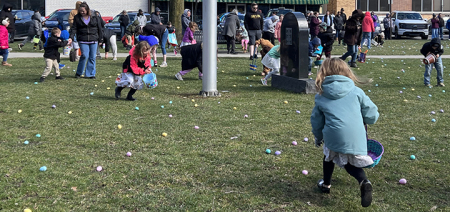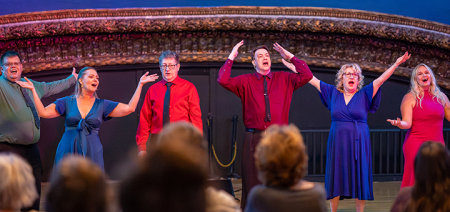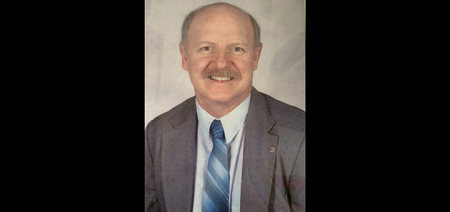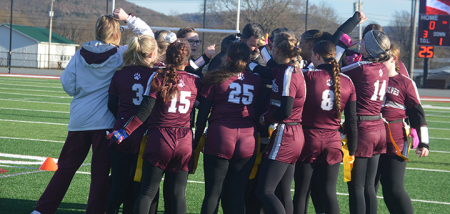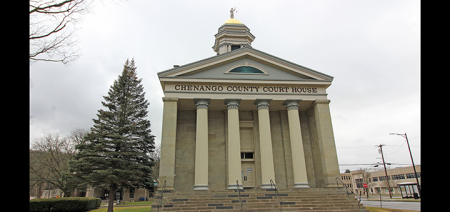‘Yes We Exist’ - Black Fans Eye NASCAR’s Work To Diversify
Published:
July 17th, 2020
 n this June 10, 2020, file photo, driver Bubba Wallace waits for the start of a NASCAR Cup Series auto race in Martinsville, Va. Some Black NASCAR fans have felt uncomfortable at the track. They’re worried about hearing racial slurs or feeling unwelcome from a predominantly white fan base. The catalyst for change has come. Bubba Wallace prodded NASCAR to ban the Confederate flag last month. There is hope the ban opens the doors to more fans. (AP Photo/Steve Helber, File)
n this June 10, 2020, file photo, driver Bubba Wallace waits for the start of a NASCAR Cup Series auto race in Martinsville, Va. Some Black NASCAR fans have felt uncomfortable at the track. They’re worried about hearing racial slurs or feeling unwelcome from a predominantly white fan base. The catalyst for change has come. Bubba Wallace prodded NASCAR to ban the Confederate flag last month. There is hope the ban opens the doors to more fans. (AP Photo/Steve Helber, File)
Kevin Johnson became enamored with NASCAR as a kid through clips on “ Wide World of Sports,” decades before billion-dollar broadcast deals when auto racing shared precious air time with barrel jumping and demolition derby.
Raised in the South Bronx, Johnson considered himself “a closet NASCAR fan,” without a friend or family member who truly shared his interest in catching the latest race.
“As you can imagine,” Johnson said, “there just simply weren’t a lot of people receptive to the sport given its history.”
Johnson recalled staying in his Temple University dorm during the massive blizzard that wreaked havoc on the East Coast in 1979 to watch the Daytona 500, broadcast live in its entirety for the first time. His roommate was stuck elsewhere because of the weather, leaving Johnson alone with the TV.
“Nobody knew,” Johnson said, laughing. “As a Black person in an urban area, it wasn’t acceptable. I wasn’t really out there. But that love continued to this day.”
The 61-year-old Johnson, who has retired to Miami, shares his passion for the sport with a Black NASCAR Fans group on Facebook. The group’s bio says: “Yes we exist.”
The fans share favorite race memories, photos of their collectibles and, yes, stories of the historically uneasy relationship NASCAR has had with the Black community.
Johnson has been called racist slurs at the track, felt queasy at the sight of the Confederate flag and often wondered if the good-ol’-boy Southern attitudes seeped in the sport would ever fade.
The catalyst for change has come for the U.S. with the death of George Floyd in the custody of Minneapolis police. Not long after that, driver Bubba Wallace shoved NASCAR toward the overdue step of banning the Confederate flag, for decades a waving, nylon symbol to Blacks that they were not welcome in NASCAR Nation.
The thought of facing the flag and the potential of alcohol-fueled anger from its staunchest defenders has kept many Black fans away and made the ones who did come watch their step. Johnson said banning the flag will make NASCAR “more inviting.”
“We need to get more people, encourage more people of color to come and enjoy what goes on around race weekend,” added Brad Daugherty, the lone Black team owner in NASCAR.
According to NASCAR, the latest demographics show an overwhelmingly white fan base — 75% — but the multicultural slice of 25% has climbed from 20% in 2011. Black fans make up 9% of the total.
The sight of Black fans lined against the Talladega fence to cheer for Wallace a day after a noose was found in his stall was a heartening moment for NASCAR. But earning the trust of a new generation of fans extends beyond “if you ban it, they will come.” NASCAR and its tracks need bolder attempts at ticket and community outreach programs, much in the way baseball, the NHL and the NBA celebrate pride or ethnic-themed nights.
Minorities may not necessarily become the dominant demographic for the stock car series, but they can certainly grab a larger share of the marketplace.
“I think the challenge for NASCAR is this: they spent a lot of time and money over the years building up a specific brand that centered on Confederate flag-waving Southern white folks as their target market, and aligned themselves with business partners and politicians who also found symmetry with this demographic group,” said Joshua Newman, a Florida State professor and author of “Sport, Spectacle, and NASCAR Nation: Consumption and the Cultural Politics of Neoliberalism.”
“This worked well to create a very specific NASCAR culture, a spectacle of celebrity politicians, military flyovers, conservative symbolism, an all-white driver line-up — for many years, but not always — and grandstands filled with predominantly white consumer fans,” Newman said. “It was unique in the North American sports landscape for its racial homogeneity and pronounced affiliations with one political party.”
But cultural politics can change and NASCAR’s boom has faded. To Newman, that means NASCAR limited its growth potential and now must find a solution.
Could Wallace, who f inished second in the 2018 Daytona 500, engage new fans if he won a checkered flag or two driving for an underfunded team? Would a diversity program that places more drivers in the Cup Series — where Wallace is the only Black driver — broaden exposure and create fans of all genders, ethnicities and backgrounds?
NASCAR has worked on building awareness among multicultural audiences for years, including Latino-focused efforts at Auto Club Speedway in California. Last year, NASCAR and the Urban Chamber of Commerce in Las Vegas teamed with a local youth group to bring a group of Black children to the race at Las Vegas Motor Speedway. The Drive for Diversity program dates to 2004 and a separate effort to work with key minority business and community leaders started three years later.
“If people look at the sport and see the stars of the sport are representative of different groups, I think it’s just another step toward making the sport feel more open to a larger audience of folks,” Drive for Diversity director Jusan Hamilton said. “If people look at the sport and feel that it’s open, that in turn will help make more folks be interested in coming to the sport.”
The few Black drivers who came before Wallace have heard that hopefulness before only to often end up discouraged at the frayed bond between NASCAR and minorities.
“It’s time to realize it’s a new day,” said Bill Lester, who made 145 career NASCAR starts from 1999-2006. “Not all the race car drivers happen to be white. There are people of color. There are women out there who want to race.”
Lester said he believes NASCAR President Steve Phelps, who tearfully told Wallace about the noose in the garage, and veteran executive Brandon Thompson can provoke tangible culture change within the sport.
“There’s a willingness to listen and engage that NASCAR has that I don’t believe they were sincere about earlier,” Lester said.
Still, Wallace is one of just a handful of non-white drivers. Daniel Suarez is Mexican and Aric Almirola is of Cuban descent. Kyle Larson, who is half Asian, was fired in April for using a racial slur.
NASCAR met this month with the Rev. Greg Drumwright, who organized members of his ministry to make the trip to Talladega to support Wallace. Drumwright said he and his group planned to attend other races, too, and he posted a series of encouraging interactions on his Twitter feed from the All-Star race at Bristol on Wednesday.
“We don’t want window dressing,” Drumwright said. “This is a national dialogue.”
Toni Addison, her husband and three children of Newark, Delaware, have never attended a NASCAR race. They drive by Dover International Speedway on race weekends and catch a glimpse of the carnival-type atmosphere at the track and wondered if they’d feel welcomed.
“It sounds like something we’d be interested in,” Addison said. “But guess I couldn’t wear my Black Live Matter shirt or my Barack Obama shirt to that. I’m a (Dallas) Cowboys fan. It’s kind of like a Cowboys fan doesn’t go into the Eagles stadium, at least not with all the Cowboys gear on.”
She’s become one of Wallace’s newest fans (“I didn’t even know there was a Black NASCAR driver”) and watched him slap hands with fans at Talladega, but acknowledged “fear may keep me away from that.”
“My impression of it is they’re mostly Trump supporters, Confederate flag supporters,” the 51-year-old Addison said. “I don’t know how comfortable I would feel fitting in.”
She could talk to fans like Johnson who, while hurt by the slurs, generally have a great time on race day and want all fans to draw the same enjoyment from the sport he has for more than 40 years.
One memory rises about the rest: Johnson and his wife, Julie, attended a meet-and-greet at Atlanta Motor Speedway with Hall of Fame driver Tony Stewart in the mid-2000s. The couple were fervent supporters of Smoke, who asked a group of fans in a suite if they had any questions for him.
Julie stepped up from the back and told Stewart, “As probably your only Black female fan, I really don’t have a question, I just want a hug.”
Stewart smiled and her invited her up for a big hug and later sent over several autographed photos.
It’s the kind of moment that can make a fan forever -- from any walk of life.
Comments
